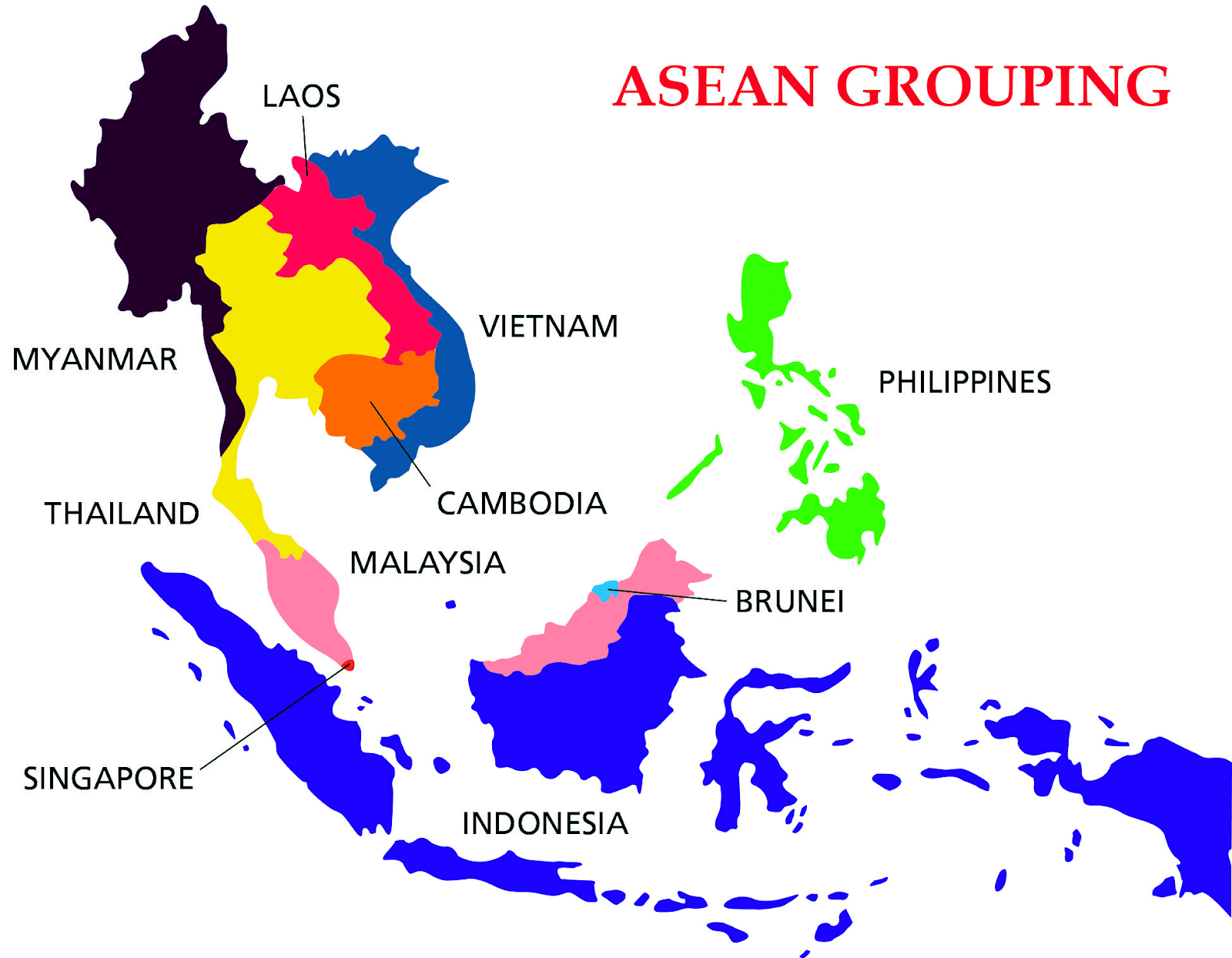International Relations
China-ASEAN Meeting
- 10 Jun 2021
- 6 min read
Why in News
Recently, China hosted a meeting of foreign ministers from the 10 Association of Southeast Asian Nations (ASEAN) countries.
- The meeting marks the 30th anniversary of China-ASEAN dialogue.
- With this meeting China looks to deepen its economic ties with the region as well as push back the renewed effort at regional engagement from the US, as well as from the QUAD (Quadrilateral Framework) grouping.
- QUAD earlier this year came out with a regional vaccine initiative.
Key Points.
- China’s Stand:
- China’s Cultural Diplomacy:
- Reiterated that China and ASEAN should jointly carry forward Asian values in a subtle dig at the West.
- China in 2014 had put forward the idea that it was for “Asian people to uphold Asia’s security”.
- Reiterated that China and ASEAN should jointly carry forward Asian values in a subtle dig at the West.
- Covid-Vaccines:
- China offered ASEAN countries its vaccines as well as closer cooperation on joint vaccine development and production.
- Maritime Security & Disputes:
- China called for considering the lifting of China-ASEAN ties to comprehensive strategic partnership and strive for an early agreement on a code of conduct in the South China Sea.
- China is banking on deep economic links to both offset maritime disputes and the push among some ASEAN countries for closer defence ties with the US amid their concerns about China’s growing military footprint in the South China Sea.
- Regional Comprehensive Economic Partnership:
- China pushed for the early implementation of the Regional Comprehensive Economic Partnership (RCEP), which was signed by China, ASEAN countries, Japan, South Korea, Australia and New Zealand in November 2020.
- India withdrew from the RCEP largely because of concerns it would open it up to Chinese goods amid an already wide trade imbalance with China, and the failure of the agreement to adequately open up to services.
- China pushed for the early implementation of the Regional Comprehensive Economic Partnership (RCEP), which was signed by China, ASEAN countries, Japan, South Korea, Australia and New Zealand in November 2020.
- China’s Cultural Diplomacy:
- ASEAN’s Importance for China:
- ASEAN plays a key role in Chinese economic and strategic interests.
- The region straddles vital sea lanes of communication that represent China’s access to the global market, including vital imports of Middle Eastern oil.
- Economically entwined with China, the relatively small nations of the region also offer ample opportunities for China to advance its influence and weaken what Chinese strategists perceive as a US (Presence of US) engineered chain of encirclement around the Chinese mainland.
- ASEAN and India:
- Traditionally the basis of India-ASEAN ties has been trade and people-to-people ties due to shared historical and cultural roots, a more recent and urgent area of convergence has been balancing China’s rise.
- In 2020, 17th ASEAN-India Virtual Summit was held.
- The 8th East Asia Summit Economic Ministers’ Meeting (EAS-EMM) was also held in 2020. It comprises the ten member states of the ASEAN, along with 8 other countries namely Australia, China, Japan, India, New Zealand, the Republic of Korea, Russia and the USA.
- Both India and ASEAN aim to establish a rules-based security architecture for peaceful development in the region, in contrast to China’s aggressive policies.
- Like India, several ASEAN members such as Vietnam, the Philippines, Malaysia, and Brunei have territorial disputes with China, the China factor does form an important component of the relationship.
- India in 2014 reinvigorated the Look East policy into Act East, with a more strategic outlook than its previous incarnation, focusing on engagement not just with Southeast Asian countries but also those in the Pacific.
- The main focus of the Act East policy is on enhancing connectivity between India and South East Asia.
- Traditionally the basis of India-ASEAN ties has been trade and people-to-people ties due to shared historical and cultural roots, a more recent and urgent area of convergence has been balancing China’s rise.
Association of Southeast Asian Nations
- About:
- It is a regional grouping that promotes economic, political, and security cooperation.
- It was established in August 1967 in Bangkok, Thailand with the signing of the ASEAN Declaration (Bangkok Declaration) by the founding fathers of ASEAN, namely Indonesia, Malaysia, Philippines, Singapore and Thailand.
- Its chairmanship rotates annually, based on the alphabetical order of the English names of Member States.
- ASEAN countries have a total population of 650 million people and a combined Gross Domestic Product (GDP) of USD 2.8 trillion. It is India’s 4th largest trading partner with about USD 86.9 billion in trade.
- Members:
- Brunei, Cambodia, Indonesia, Laos, Malaysia, Myanmar, the Philippines, Singapore, Thailand, and Vietnam..
Way Forward
- With China frequently displaying the intention as well as capability to challenge India, as seen in the Doklam standoff, it is pertinent that India finds more like-minded nations interested in working together to protect regional peace and stability.
- In this context, ASEAN fits the bill perfectly. ASEAN can also spur rapid growth of India’s underdeveloped northeastern region if linkages that enable movement of people and goods could be established quickly.
- But in order to do that, India must focus on speeding up connectivity projects and addressing its uneven balance of trade with ASEAN nations.





